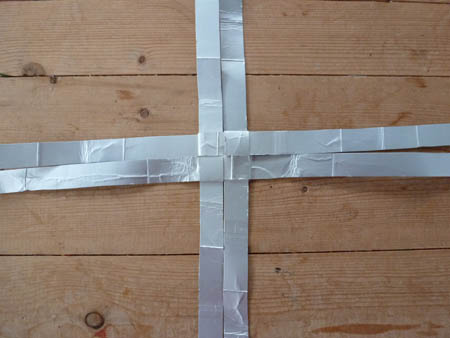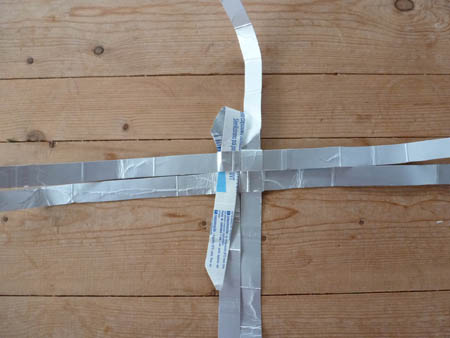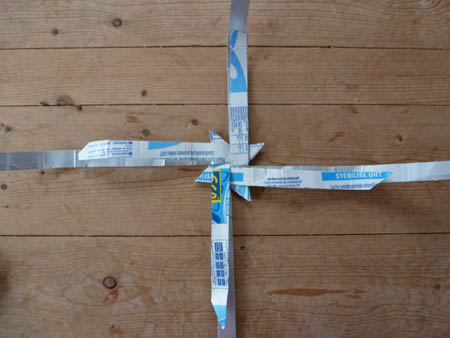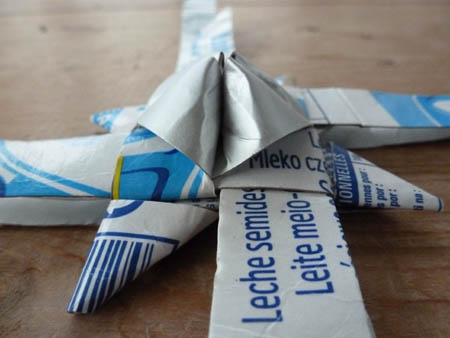Woven Tetra Stars

Not every tetra pak has a silver lining, but those for milk do and are useful for Christmas decorations.
These tetra stars cost nothing to make, require no toxic glitter sprays or glues and the only child labour involved will, hopefully, be that of your own children! Northern Europe, America, Scandinavia and Japan are the most commonly claimed locations for the origin of these decorations. It doesn’t really matter where they originated, but in the making of them there is weaving as you might find on baskets all over the world. There is also a whiff of origami and surface decoration curls that often feature on south East Asian and Native American baskets.
You will need:
4 strips of tetra pak 2cm wide and 55cm long.
To get strips long enough from a one litre carton you will have to cut off the top and bottom of the carton, open it out into a cylinder and cut spirally. Start with a taper and gradually widen it until it measures 2cm.

You can do this free hand but here are a couple of films that might help. The first one shows you how to make a simple tool for cutting strips to an even width and the second how to use the tool to cut strips for weaving.
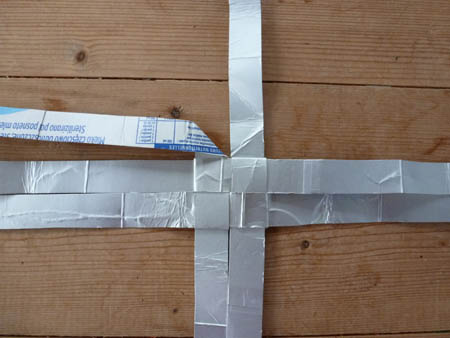


The variations are endless, not just with the size of strip but also the way in which it is started, the direction of the points and colour combinations. For the raised parts it is possible to make cones that don’t touch each other, which makes it more spiky looking. You can also make another set of points in between these…. but I will let you play….
There is a whole milky way of possibilities for you to discover.
Lois Walpole, Britain

PROFILE
Lois Walpole is of Anglo Scottish heritage and trained in Sculpture, Basket Making and Design.
She works full time as an artist/basket maker taking part in and curating national and international exhibitions, working to commission, designing for production, teaching and writing.
She divides her time between the Shetland Islands and the Charente, in south west France, where her studio is based.
Her blog gives the latest about her teaching and exhibitions and is where she talks about the baskets and basket related things that she finds interesting, inspiring, infuriating and intriguing…
Her self imposed rules are “no materials purchased and basket making techniques employed wherever possible”.







